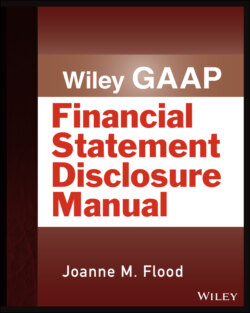Читать книгу Wiley GAAP: Financial Statement Disclosure Manual - Joanne M. Flood - Страница 78
Cash and Cash Equivalents
ОглавлениеEntities must explain the changes in the total of cash and cash equivalents and amounts described as restricted cash or restricted cash equivalents. Entities must combine restricted cash with unrestricted cash and cash equivalents in the statement of cash flows. If those amounts are presented in more than one line item in the statement of financial position, the entity must disclose:
The line items
Amounts of cash described as restricted cash or restricted cash equivalents
The disaggregated amounts must equal the total shown in the statement of cash flows. This information may be presented on the face of the statement or in the notes in narrative or tabular format. (ASC 230‐10‐45‐4 and 50‐8)
Entities commonly invest excess cash on hand in short‐term, highly liquid investments, and those amounts are substantively the cash the entity owns. Therefore, it makes sense for the statement of cash flows to focus on the aggregate amount of those accounts. Cash purchases and sales of cash equivalents are part of the entity's cash management activities, and those transactions need not be reported in the statement of cash flows. Entities should not present transfers between cash and cash equivalents and restricted cash and restricted cash equivalents. (ASC 230‐10‐45‐5)
Cash equivalents generally include any short‐term, highly liquid investments used as a temporary investment of idle cash. The entity must, however, have a policy as to which investments that meet the definition are treated as cash equivalents and that policy should be disclosed in the notes. (ASC 230‐10‐45‐6 and 50‐1)
